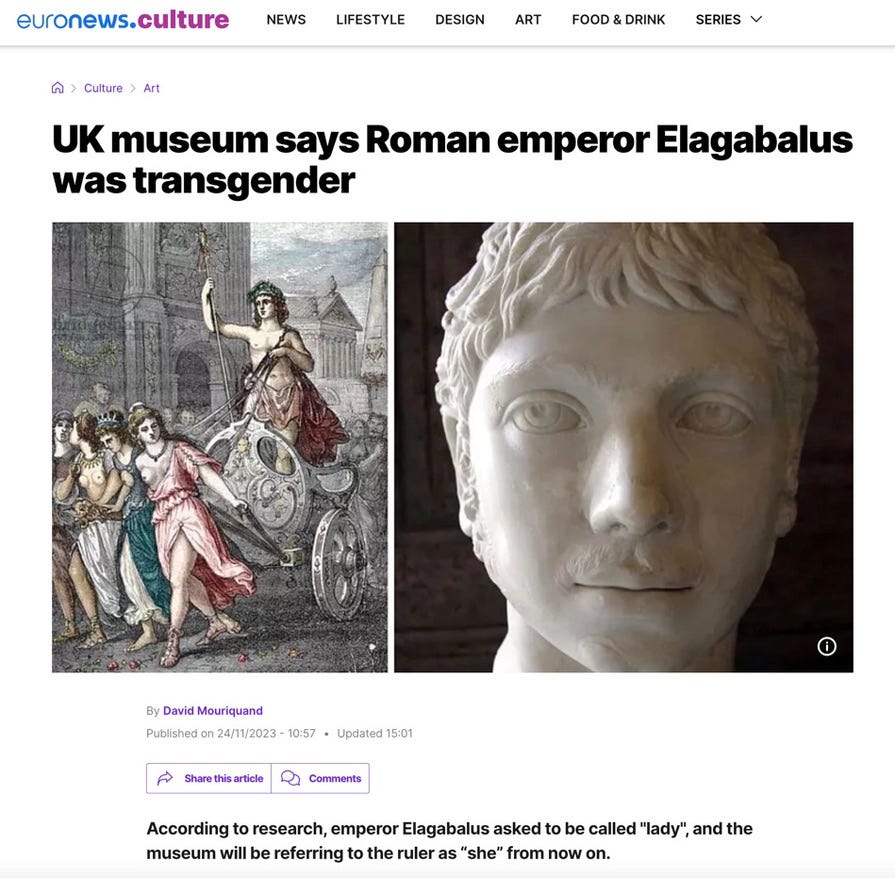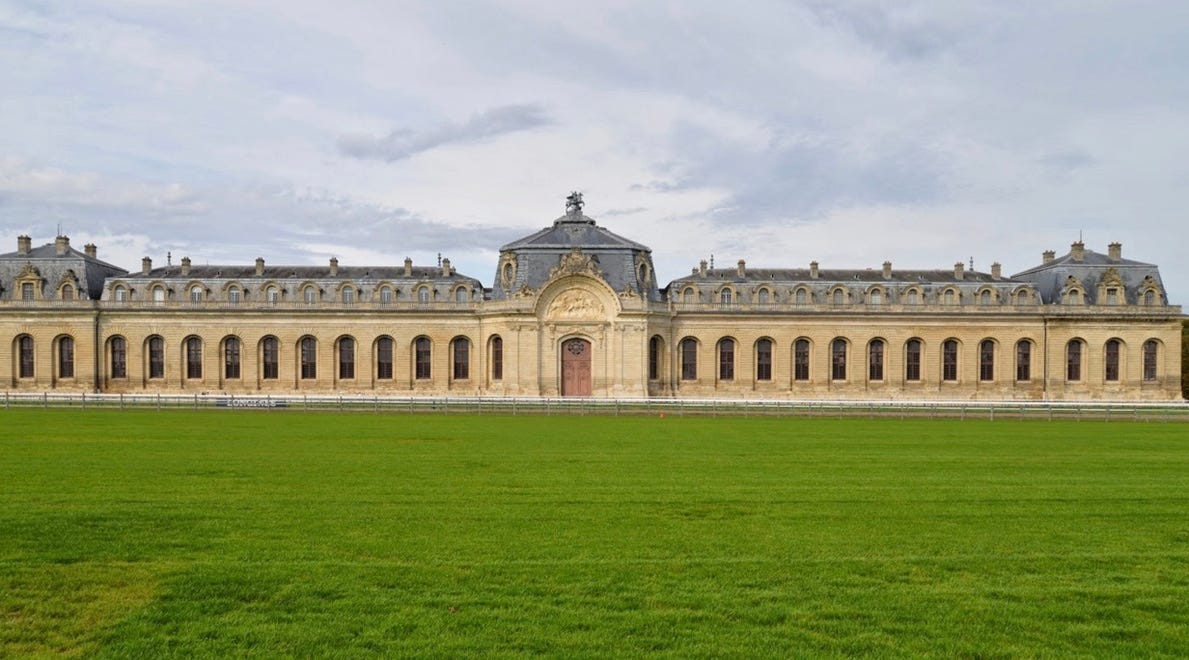The Trans Emperor's New Clothes
When a local museum described a Roman emperor as a 'transwoman' all hell broke loose but the strange case of Elagabalus may be the least objectionable transing of history so far.
Who knew North Hertfordshire even had a museum? That was my first response when the county’s little-known repository of artefacts and collective wisdom declared that it would from now on be referring to the Roman Emperor Elagabalus with female pronouns. Cue emoticons of shock and horror.
I was surprised at the reaction. The blanket condemnation from fellow “gender criticals” struck me as a slight over-reaction. Here’s why.
Don’t get me wrong. I don’t think anyone is actually transgender. Either today or 1800 years ago. We’re all, I’m sure, thoroughly sick and tired of the well-worn trans lobby tactic of reclaiming anyone they can get their hands on in history to sprinkle their movement with borrowed legitimacy. That’s why when it was discovered that a Viking warrior who’d long been presumed to be male actually had a female skeleton, she/her was promptly repackaged as a he/him transman. Or a non-binary they/them Vikingy thingy.
Perish the thought she was just a kick-ass female warrior, a Viking Amazonian. How long, by the way, until the Amazonians are transed? Set your alarm. It’s a matter of time.
Elagabalus strikes me as different though. Through history there seem to have been some men who didn’t just identify with women but deep down thought they were women. Wrongly, of course. They were no more women than Eddie Izzard with his portable rubber breasts is one. The crime of North Hertfordshire Museum, in my book, wasn’t attaching the fashionable label trans to a long-dead Roman but the use of female pronouns. Elagabalus was not female. No matter how much he may have thought he was.
Museums should not indulge delusions. Where would it end? History is filled with fascinating characters who were in the grip of fantasies. The French aristocrat the Prince de Condé (1652-1740) believed he would be reincarnated as a horse and built perhaps the world’s most extraordinary stables in Chantilly so he could be housed in style ….come the day.
It’s an amazing place. It’s so vast that when Peter the Great came to visit he was entertained with a lavish feast in the central hall.
It’s now a wonderful Museum of the Horse, which no doubt must please the Prince de Condé as he canters around in the Afterlife.




